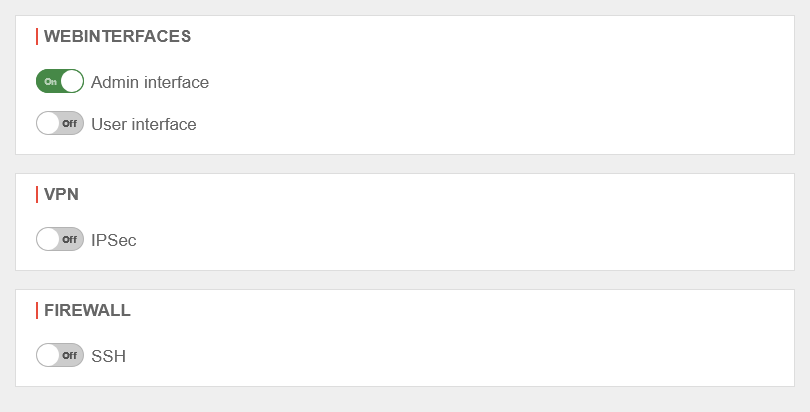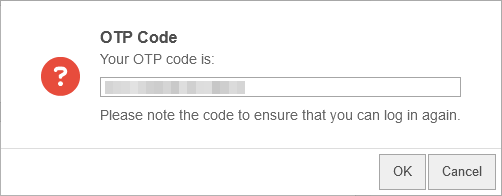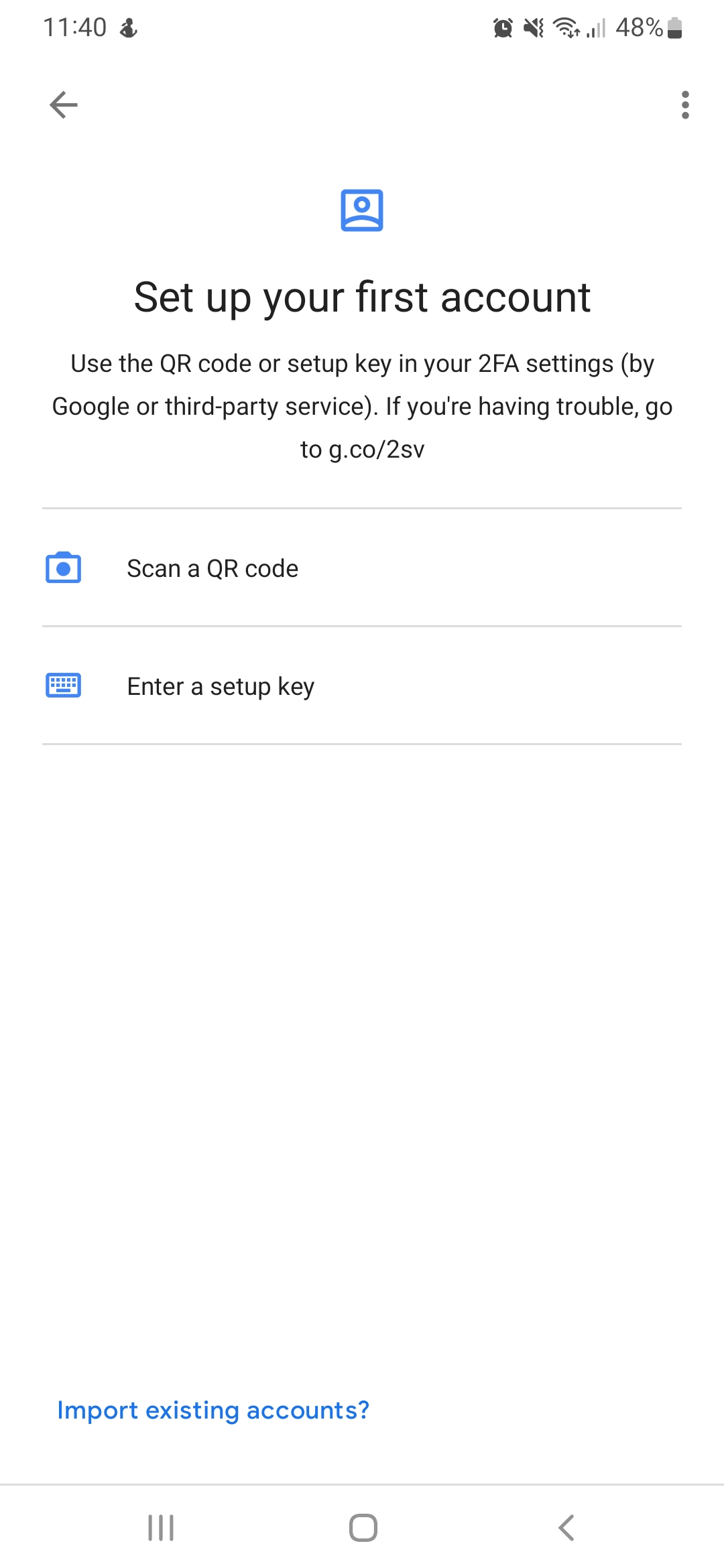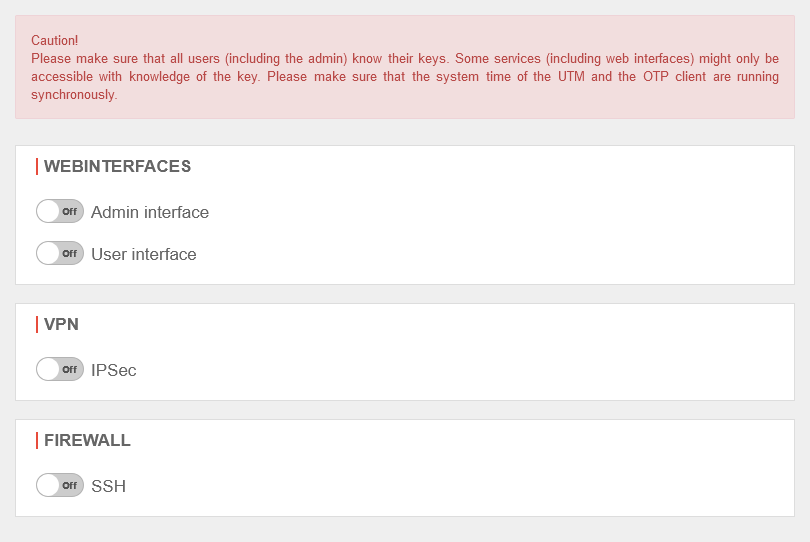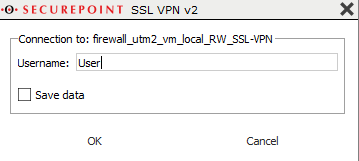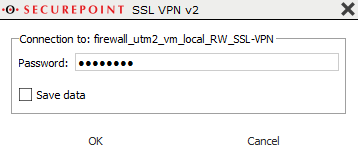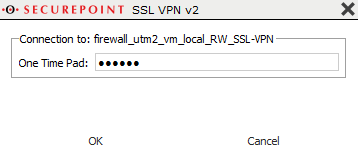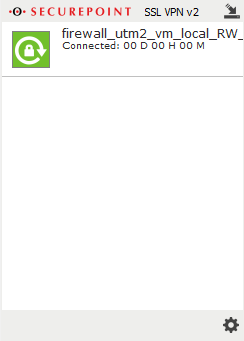Last adaptation to the version: 14.0.0 (11.2024)
- Automatisches Generieren von OTP-Codes wurde optimiert
Preliminary remarks
If the OTP method is activated, login is only possible by entering a correct OTP.
SSL-VPN:
Since SSL VPN re-authenticates every hour, a new OTP must also be entered every hour.
Renegotiation can be increased or completely disabled in the menu in the settings of a connection in the General tab under Renegotiation.
Of course, disabling is not recommended. A change is transmitted by the UTM to the SSL VPN clients.
Saving the password in the SSL VPN client is not possible because the password that is passed is composed of the static user password and the OTP.
In case of malfunction of the OTP generator (smartphone or hardware token), the OTP can only be generated if there is access to the QR code or the secret code.
This can be found under .
If this is not available, access to the UTM is only possible with physical access directly at the device (keyboard and monitor at the UTM).
Printout of this code for the administrators as described in OTP Secret. File in the documentation.
The time of the UTM system can be checked in three ways:
- Using the CLI with the command system date get
- Using the root console with the command date
The system time can then be set using the following options:
- Using the administration web interface in the menu Area Time settings
- Using the CLI with the command system date set date then seperated with spaces the current date and time in the format YYYY-MM-DD hh:mm:ss
OTP - One-Time-Password
Das One-Time-Password ist ein zusätzlicher Authentifizierungs-Mechanismus der für zusätzliche Sicherheit bei der Anmeldung eines Benutzers sorgt.
In der UTM wird das Zeit-Basierte-Verfahren verwendet (TOTP: Time-based One Time Password). Hierbei wird aus dem Sharedsecret Code und der aktuellen Uhrzeit alle 30 Sekunden ein neuer OTP errechnet.
Um diese sechs-stellige Passwort zu generieren, gibt es verschiedene Möglichkeiten:
- Smartphone App: Es kann eine Smartphone App genutzt werden, die das Passwort berechnet. Zum Beispiel der Google Authenticator, diesen gibt es für Android und iOS, oder aber auch andere Apps wie bspw. FreeOTP+ für Android, diese bieten ggf. sogar einen größeren Leistungsumfang wie Export der Tokens, bessere Hash-Algorithmen usw.
- Passwortmanager für den PC: Es kann ein Passwortmanager für den PC verwendet werden, welcher OTPs erzeugen kann bspw. KeepassXC.
- Hardware Token: Es gibt Hardware Tokens die einzig für die Generierung von OTPs zuständig sind.
Set up OTP
Activation procedure

- Sicherstellen, dass die Uhrzeit der UTM und des Tokens synchron läuft Die Genaue Zeit der UTM wird unter Area Servereinstellungen Abschnitt Zeiteinstellungen angezeigt
Configure OTP User
First, the users are created under as usual.
See also Benutzerverwaltung.
The OTP code for this user can only be displayed after the user's entries have been saved.
Display or change by clicking on the edit button in the user row in the tab OTP on the right side.
The code can be created automatically by the Securepoint UTM and is available in two formats.
On the one hand as a QR code, which can simply be photographed with the smartphone app, and on the other hand in text form to be entered using the keyboard.
OTP Configuration
| |||
| Caption | Value | Description | UTMuser@firewall.name.fqdnAuthentifizierungUser 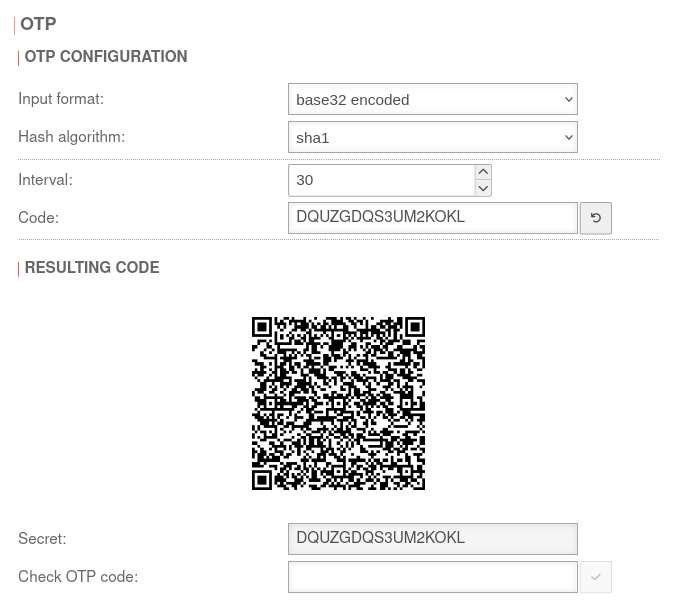 OTP user OTP user
|
|---|---|---|---|
| Input format: | Default setting, base32 encoded, 16 characters length Codes less than 26 characters in length may be flagged as insecure by OTP apps | ||
| base64 encoded, length 16 - 168 characters (in blocks of 4), manual input | |||
| HEX coded, valid characters: A-F, a-f and 0-9 / length 10-128 pairs, manual input | |||
| Hash algorithm: | Default |
The hash algorithm can be selected | |
| notempty Not every authenticator app supports every hash algorithm! Some of these apps do not support sha256, or sha512. When using these apps, the default value may have to be retained. | |||
| Interval: | 30 | The interval should be set to 30 seconds If a hardware token is used, its value must be adopted. OTP apps are often optimized to update the token every 30 seconds. | |
| Code: | DQUZGDQS3UM2KOKL | Gives the code in text form. It is also possible to enter a code manually, e.g. a hardware token. | |
| Creates a new code with the default settings (base32 coded, interval 30 seconds) | |||
Resulting Code
| |||
| Secret: | Gives the code in text format | ||
| Check OTP code: | An OTP code generated with a corresponding OTP generator can be entered here to check whether the OTP generator has been set up correctly. | ||
OTP Secret
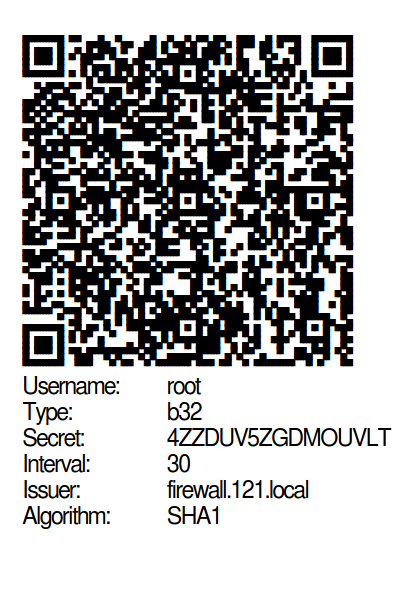
For distribution to the users there is a possibility to print the created codes.
A document in PDF format will then be generated as follows:
Setting up an Authenticator
Use of a hardware token
The use of a hardware token is also possible.
This should be a RFC 6238 compatible password generator.
Securepoint currently supports the Feitian OTP c200.
A download link for the HEX code is sent by the supplier for this purpose, which must be registered with the user as described above.
The following parameters must be used:
- SHA algorithm: SHA1
- Time interval: 30 seconds
- Optional: SEED programming Background on SEED programming: In case the token happens to be created in in non-trustworthy countries and you want to make sure that it does not already contain malicious code or is otherwise compromised upon delivery, i.e. Mtrix will reprogram it for a small amount.
The ID is a serial number of the token and the key is a 32 to 40 character code.
Assign OTP to applications
Under one can select for which applications the users should additionally authenticate themselves with the one-time password.
Use OTP
Webinterface
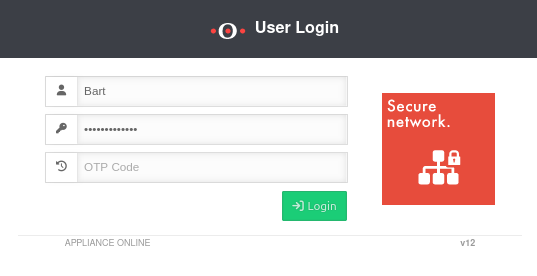
When logging in to the administration or user web interface, there is now an additional authentication field for the OT code.
Here, in addition to the user name and password, the generated code is entered.
VPN
In the SSL-VPN Client, you can set whether the OTP code is to be requested separately. A more detailed explanation can be found here.
If the remote terminal allows a separate transmission of the OTP password, the following procedure can be followed:
Start the SSL VPN connection on the client (on Windows: double-click the lock icon in the taskbar).
Establish the connection by clicking on ![]() The connection is established in three steps:
The connection is established in three steps:
Example:
| Password: | insecure | Saving the password in the SSL VPN client is not possible because the password that is passed is composed of the static user password and the alwys changing OTP. |
| OTP: | 123456 | |
| password: | insecure123456 |
SSH connection
If access is used with an SSH console and OTP, the OTP code is requested in a separate row Pin.

When accessing with an SSH console and OTP, and the counterpart does not allow separate transmission of the OTP code, the OTP code is entered without spaces directly after the user password.
Example
| Password in UTM: | insecure |
| OTP: | 123456 |
| Password: | insecure123456 |



